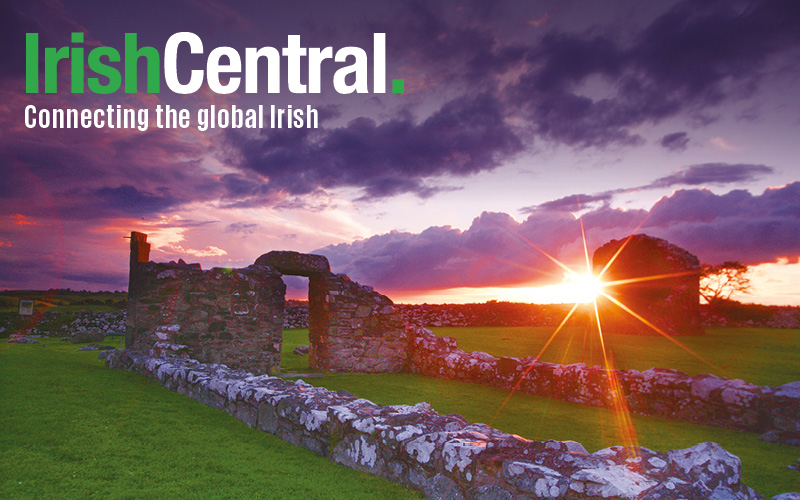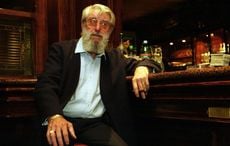Pope John Paul II visited Ireland when Catholicism was at the height of its power over the Emerald Isle. How different a challenge Pope Francis will face when he visits in the summer of 2018.
Pope Francis will visit an utterly changed Ireland to that which greeted John Paul II in September 1979. For starters, the Prime Minister (Taoiseach) is gay, the seminaries are empty, mass attendance has plunged and the priests are literally dying off.
John Paul faced none of that.
Francis announced on Wednesday he will arrive in Ireland on August 25 for a two-day visit. In contrast, John Paul’s visit was a triumphal procession with supplicants on bended knees everywhere.
Read more: Last time the Pope visited Ireland was same year the openly gay Irish leader was born
The tone was set within hours of his arrival when one million people gathered in Dublin’s Phoenix Park to pay homage as John Paul said mass. In the course of his three days, an estimated two million came out to see him out of a total population of 3.4 million.
It was a time when 87 percent of the population attended mass every week. That figure is now 30 percent and much of the attendance are members of migrant groups such as the Poles.
Pope Francis to visit IrelandThe last time the Pope visited Ireland was same year the openly gay Irish leader was born. Many things have changed in Ireland since the birth of our Taoiseach and the last visit from a Pope. Read the full story here: http://irsh.us/2GPeLAN
Posted by IrishCentral.com on Dé Céadaoin, 21 Márta 2018
1979 was the high holy water mark of the power and glory of Catholicism in Ireland.
But the church in the wake of the pope’s visit was arrogant and deluded. The leaders felt they had little else to gain from the papal visit, which as far as they were concerned, confirmed the perpetual light of the Catholic Church over all its followers.
That arrogance, however, carried the seeds of disaster. The Irish clergy was so dominant that politicians or lay leaders of any stripe did not dare challenge their power. As a result, they were also oblivious to their massive shortcomings.
Abbott Mark Hederman of Glenstal Abbey summarized the church position in the time of John Paul's visit thus:
“Ireland was meant to be the purest country that ever existed, upholding the Catholic ideal of no sex except in marriage and then only for procreation and the priest was to be the purest of the pure. It’s not difficult to understand how the whole system became riddled with what we now call a scandal but in fact was a complete culture. (That was ) because you had people with no understanding of their sexuality, of what sexuality even was, and they were in complete power.”
Read more: Irish priests advised on how to deal with being accused of sexual abuse

Pope John Paul II at the Phoenix Park, Dublin, in 1979.
They abused that power enormously.
A Father Payne in Dublin was among the first, accused by adults who somehow found the courage to confront him. Soon a trickle became a flood.
The man who broke the church was Father Brendan Smyth of Cavan, who it is estimated abused at least 200 children in a horrific career ping-ponging from parish to parish in Ireland and America secure in the knowledge the hierarchy had covered up for him. When he was eventually exposed, he brought down Cardinal Sean Brady, who had served on a disciplinary committee on Smyth when he was a young priest and had exonerated him.
Read more: Pope Francis will visit a different Ireland to John Paul II
He also brought down Prime Minister Albert Reynolds when he appointed an Attorney General, despite the fact that the man had bungled the Smyth case.
And on and on it went.
The tribunals of inquiry turned up horrific evidence of abuse so widespread even battle-hardened media and politicians could hardly believe it.
It had been hiding in plain sight when John Paul II came but it went on to nearly destroy the church as an institution with no power to influence, as the vote to approve same-sex marriage proved.

Pope John Paul II in Dublin in 1979.
Into this maelstrom now comes Pope Francis, remarkable pontiff and well-loved in Ireland for his humility and compassion.
His mission is clear: to try to establish the link now broken between the Catholic Church and the faithful.
If anyone can do it he can but it is a different Ireland. For example, the country will have just voted on a referendum to allow limited abortion. There is a strong sentiment that he cannot succeed, that the damage is done.
I agree. Francis will do his best and work his magic but I think it's wishful thinking to imagine a Catholic revival. That bird has flown.




Comments